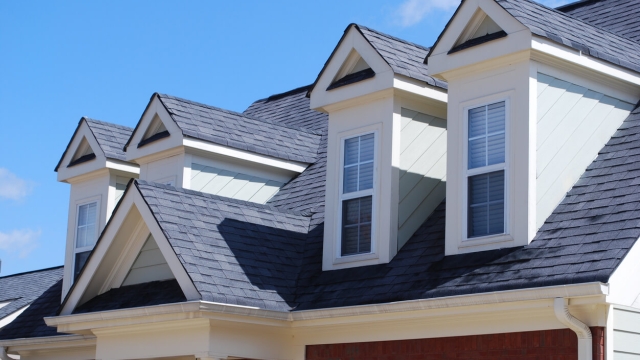
Revealing the Secrets of a Stellar Roof: A Comprehensive Guide to Roofing

Welcome to a comprehensive guide that unveils the secrets of a stellar roof. Whether you are a homeowner, an aspiring DIY enthusiast, or simply curious about the world of roofing, this article is your go-to resource. A roof serves as the protective barrier between your humble abode and the forces of nature, shielding you from the scorching sun, torrential rains, and everything in between. The importance of a well-maintained and properly constructed roof cannot be overstated. So, let’s embark on a journey to explore roofing from every angle, equipping you with the knowledge and insights to make informed decisions about this crucial aspect of your home. Let’s dive into the fascinating realm of roofing and unlock its mysteries together.
Types of Roofing Materials
When it comes to roofing, there are various materials that can be used to construct a durable and reliable roof. Each type of material has its own unique characteristics and benefits. Here, we will discuss three popular options: asphalt shingles, metal roofing, and clay tiles.
Asphalt shingles are the most commonly used roofing material in North America due to their affordability and ease of installation. They come in a variety of colors and styles, making it easy to find one that matches your home’s aesthetic. Asphalt shingles are durable and can withstand harsh weather conditions, making them a popular choice among homeowners.
Metal roofing is another option that has gained popularity in recent years. It offers excellent durability and longevity, often lasting more than 50 years. Metal roofs are known for their resistance to fire, insects, and rot. They are also highly energy-efficient, reflecting sunlight and reducing cooling costs. Metal roofs come in different types, such as steel, aluminum, and copper, providing homeowners with a wide range of options.
Clay tiles are known for their unique and timeless look. They give a home a classic and elegant appearance and are often associated with Mediterranean or Spanish-style architecture. Clay tiles are resistant to fire, insects, and rot. They are extremely durable and can last for decades with proper maintenance. However, they are heavier than other roofing materials, which may require additional structural support.
In conclusion, the choice of roofing material depends on various factors, including budget, climate, and personal preference. Asphalt shingles, metal roofing, and clay tiles are just a few examples of the many options available. It is important to consider the pros and cons of each type before making a decision, as a well-chosen roofing material can significantly enhance the aesthetic appeal and functionality of your home.
Signs of Roofing Damage
Roofing damage can occur over time due to various factors such as weather conditions, age, and improper maintenance. Being aware of the signs of roofing damage is crucial in order to address any issues promptly and prevent further deterioration. Here are some key indicators that may signal potential roofing problems:
Missing or Damaged Shingles: Inspect your roof for any missing or damaged shingles. Shingles play a vital role in protecting your roof from elements like rain and UV rays. If you notice any shingles that are cracked, curled, or completely missing, it’s a sign that your roof may be compromised and in need of repair.
Water Leakage: Water leakage is a common sign of roof damage. Check for water stains or discoloration on your ceilings, walls, or attic. If you notice any water spots, it could indicate a roof leak. Addressing the issue promptly is essential to prevent further water damage internally and externally.
Sagging or Uneven Roof: A sagging or uneven roof is a clear indication of underlying structural issues. If you observe any areas on your roof that appear to be sagging or dipping, it could be a sign of structural damage or water infiltration. It’s important to seek professional assistance to assess and address this type of roofing damage to avoid potential safety hazards.
By paying attention to these signs of roofing damage, you can proactively maintain the integrity of your roof and avoid costly repairs or premature replacement. Regular inspections and timely repairs are essential in ensuring the longevity and functionality of your roofing system.
Roofing Maintenance Tips
Roofing Contractor Spokane
Regular maintenance is crucial to ensure the longevity and effectiveness of your roof. By following these simple tips, you can keep your roof in top-notch condition for many years to come.
Inspect your roof twice a year: It’s recommended to conduct a visual inspection of your roof at least twice a year, in spring and fall. Look for signs of damage, such as missing or cracked shingles, loose flashing, or clogged gutters. Identifying and addressing these issues promptly can prevent more extensive damage down the line.
Keep your roof clean: Regularly remove any debris, leaves, or branches that accumulate on your roof’s surface. This helps prevent moisture buildup and potential damage. Be careful when cleaning your roof and only use gentle methods to avoid causing any harm.
Trim overhanging branches: Overhanging tree branches can scrape against your roof and potentially damage shingles. Trim back any branches that come into contact with your roof to prevent unnecessary wear and tear. This simple step can also reduce the risk of falling branches during a storm.
Remember, a well-maintained roof not only protects your home but also adds to its overall appeal. By following these maintenance tips, you can extend the life of your roof and ensure it continues to provide sturdy protection for years to come.



